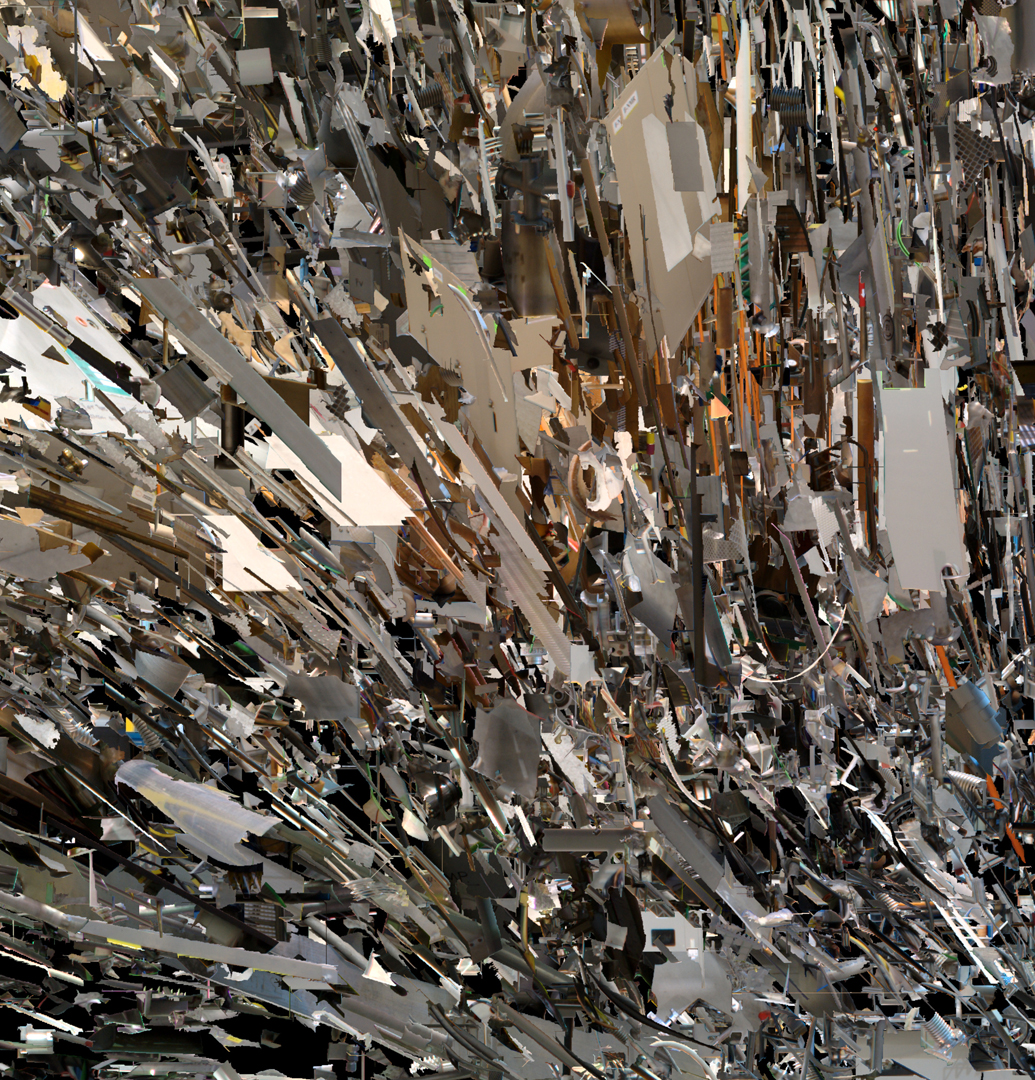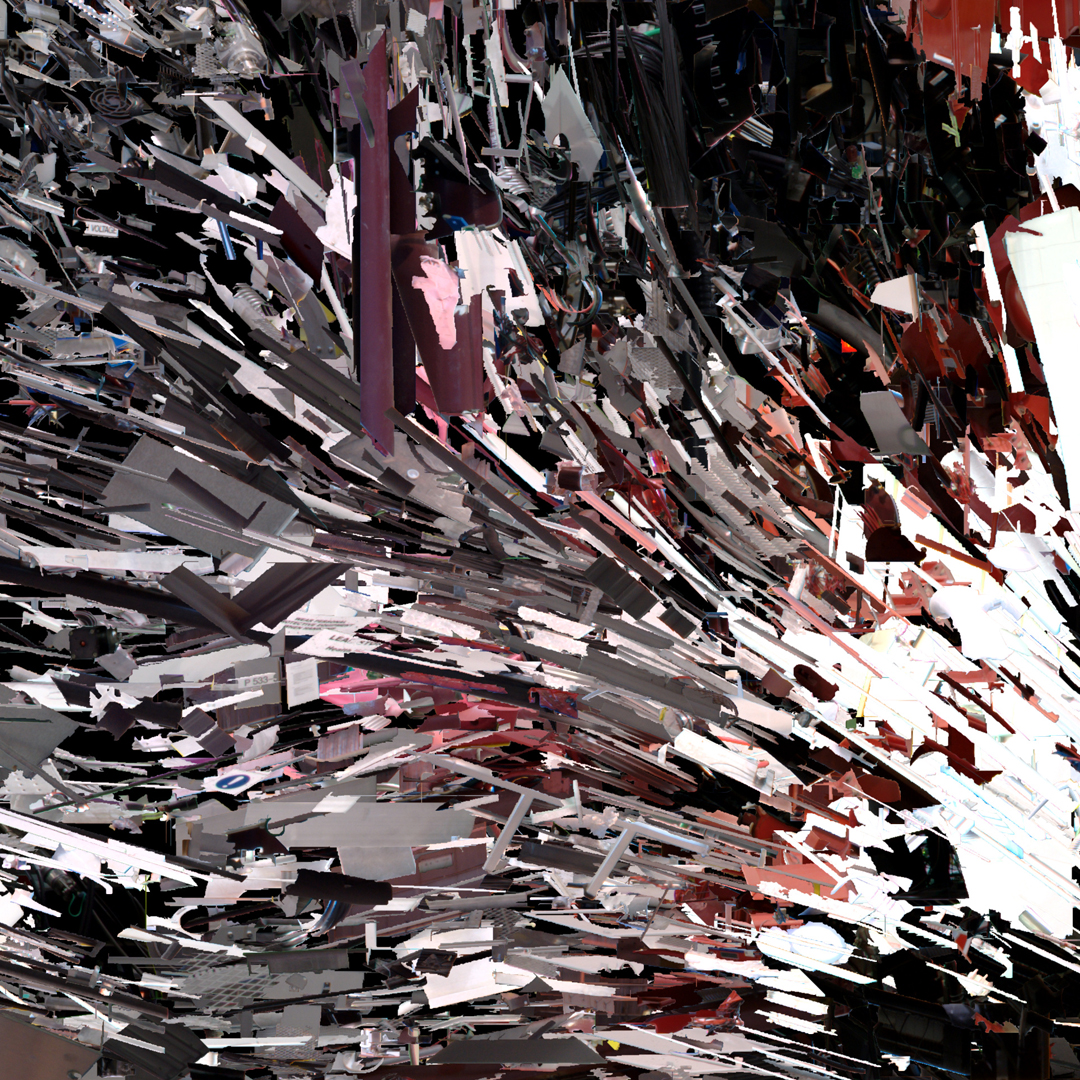Ben Bogart: Imagined Field From The Decomposition Of An Apparatus
Artist(s):
Title:
- Imagined Field From The Decomposition Of An Apparatus
Exhibition:
Category:
Artist Statement:
Summary
Produced during the Leaning Out of Windows project (an interdisciplinary dialogue between artists, scholars and physicists) this large-scale collage is composed of ~130,000 fragments extracted from photographs of a particle accelerator facility. The boundaries of segments and final composition are determined by unsupervised clustering where patterns are grouped by similarity.
Abstract
This work was produced in the context of the Leaning Out of Windows project, where artists, scholars and physicists are placed in collaborative dialogue in the development of new artistic works. One of the overlaps between experimental particle physics and my own work is the deconstruction of material in order to inspect the nature of objects and their constituents. The source material for this work is a set of photographs of the experimental apparatus of the TRIUMF particle accelerator. The emphasis of the photographs is the beam-lines that facilitate the transport of various particles in the apparatus, which resembles a industrial factory. The various exotic particles are made through acceleration, filtering and collision. I often work with photographic imagery and machine learning methods to question the relations between objects and contexts, reality and imagination, and realism and abstraction.
This image is composed from ~130,000 image fragments extracted from 100 photographs taken at TRIUMF. Image fragments are constructed by the algorithmic selection of areas of somewhat uniform colour. The edges of these fragments are an emergent result of the interaction of a segmentation algorithm and the photograph. The image is constructed by collaging these fragments where placement is determined by grouping fragments, according to colour and orientation, using a self-organizing machine learning algorithm. The macro-structure is then also an emergent result, this time following from the interaction between the self-organizing algorithm and the set of photographic fragments. While I have used this fragmentation process in other works, it was my exposure to Karen Barad’s concept of “cutting together/apart”, that solidified by thinking on objects as resulting from the creation of boundaries through (inter)intra- action. This conception aligns very closely to what I’ve been thinking about as Machine Subjectivity that is enabled by imagination as boundary-making and a critique of classification.
Other Information:
Inspiration Behind the Project
The Leaning Out of Windows project (https://leaningoutofwindows.org/) was an amazing opportunity to interact with physicists and spend time shooting in the TRIUMF particle accelerator facility. As part of the project I was honoured to have been invited to attend a seminar with the non-binary transdisciplinary theorist Karen Barad; they have been developing an “onto-epistemology” integrating quantum field, cultural and feminist theory. One of the aspects of their work that resonates with me is the idea that boundary-making is foundational to the creation of both concepts and matter. In my piece, I use machine learning to create boundaries that segment the photographic source material. Boundaries divide the photographic image into smaller components, not unlike particles. These components range in size from being large enough to remain photographically readable to so small they’re more akin to abstract brush strokes. The composition holds the tension between photographic readability and the swirling flow of a multitude of tiny elements. The work is an emergent construction formed through the constructive potential of boundary-making resulting from the intra-action of many parts.









